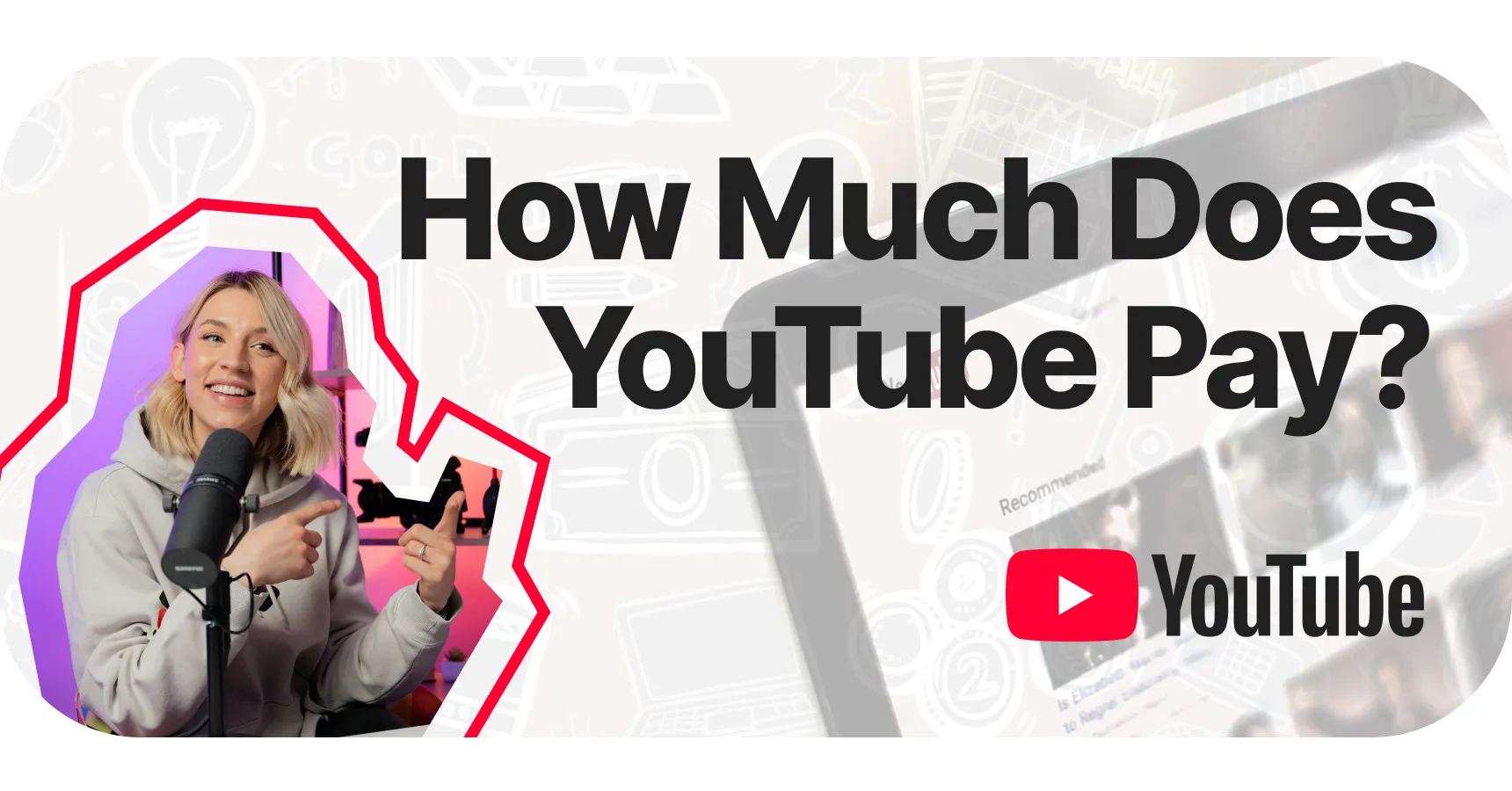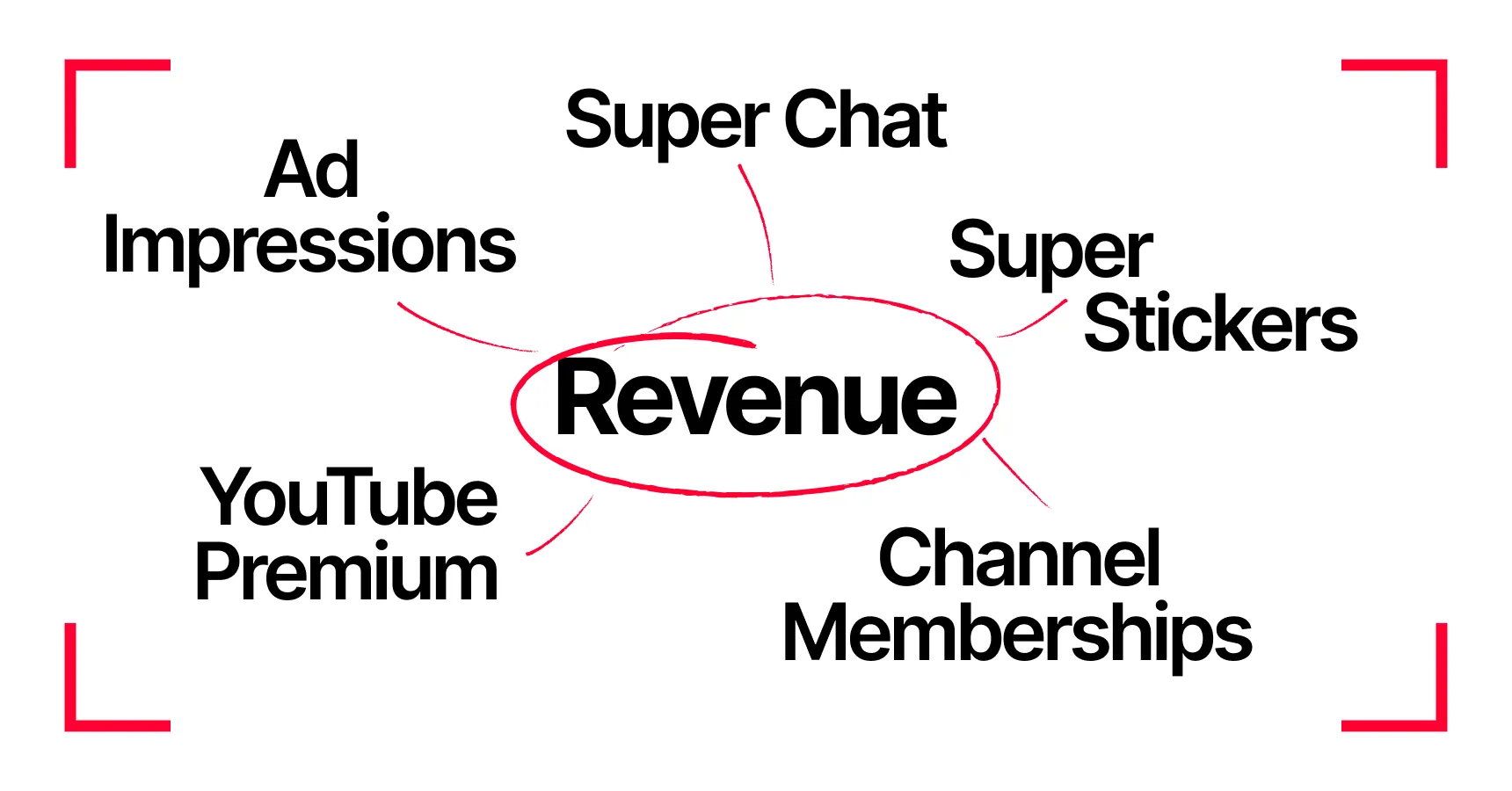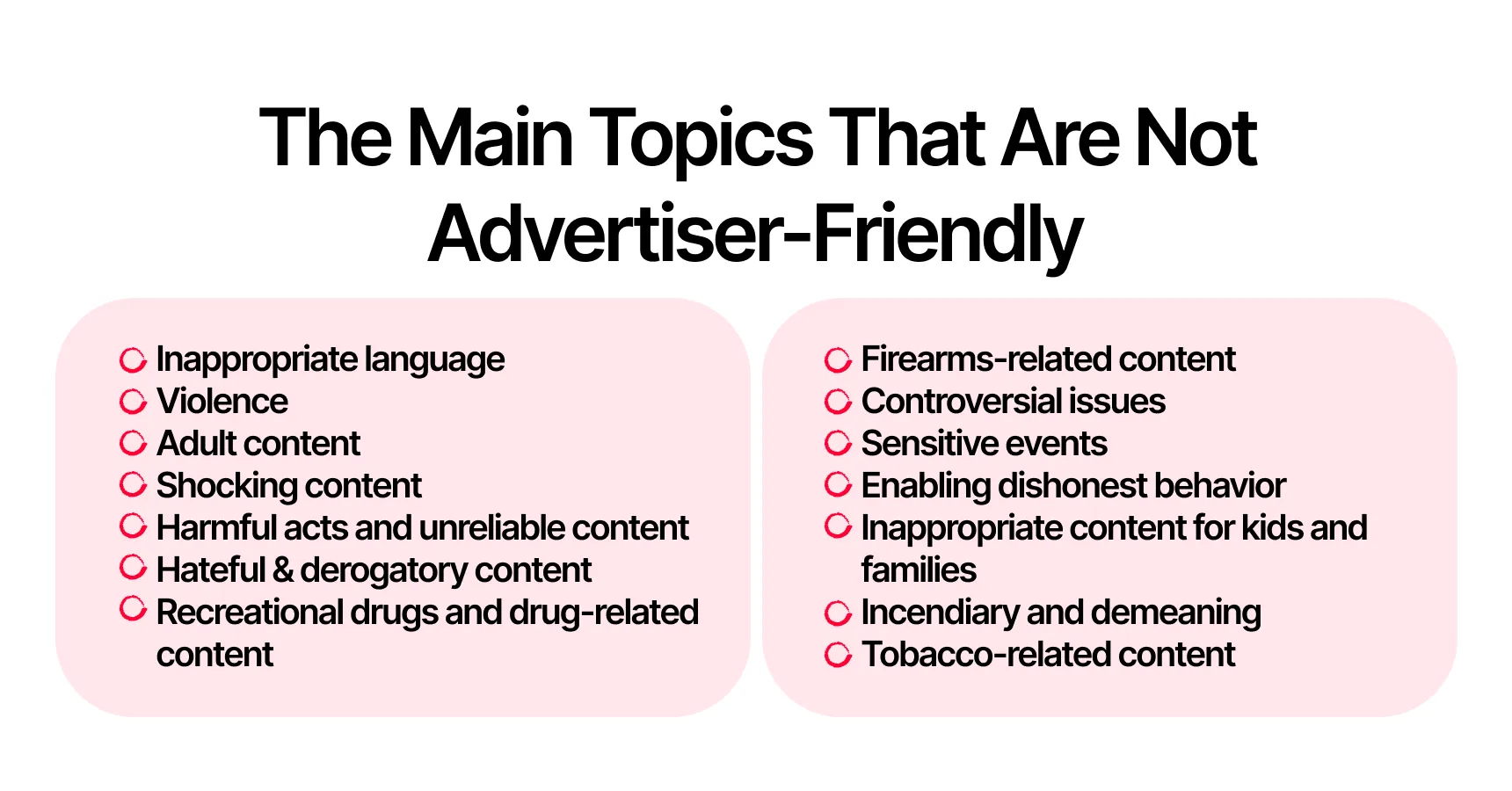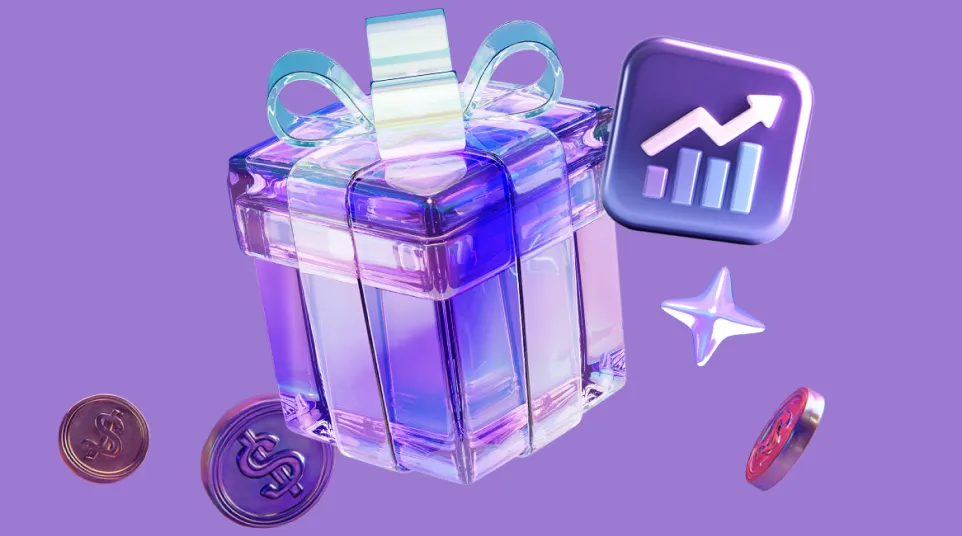How Much Does YouTube Pay Per View? (How To Boost Earnings)

You’ve probably typed “how much does YouTube pay per view” into Google at least once. It sounds like a simple question, right? But the answer is messy. Yes – you can estimate how much YouTube pays per view, but it depends on lots of moving parts. In this post, we’ll break down the real numbers, explain all the metrics, walk through example scenarios, and show you how you can push your earnings higher.
a BANG?
How YouTube monetization works
Before we dive into per-view math, we need to see how YouTube pays at all. That helps you understand why “per view” is a shaky model.
The YouTube Partner Program & eligibility
You can’t just upload videos and expect to make money. To earn ad revenue, you must be accepted into the YouTube Partner Program (YPP). The basic requirements (as of 2025) include:
- At least 1,000 subscribers
- At least 4,000 valid public watch hours in the last 12 months or 10 million valid public Shorts views in the last 90 days
- Reside in a country where monetization is enabled
- Comply with all YouTube monetization policies and have an AdSense account
Once you’re in YPP, you unlock features like ad revenue sharing, channel memberships, Super Chat, merch shelf, and more. But – and this is key – not every view or video gets monetized.
Revenue sharing – YouTube’s cut vs your share
When ads run on your videos, advertisers pay a certain amount. Yet, creators don’t keep the full sum. YouTube takes a cut – commonly 45% – and gives creators 55% of the ad revenue. This is standard in many public reports. You get paid from the portion YouTube shares after their cut and after filtering out views that can’t get ads. YouTube defines revenue metrics clearly in their support docs.
Also, revenue comes not just from ads but from YouTube Premium, memberships, Super Chat / Super Stickers, and so on. These alternate sources blend into your total earnings.
So when someone says “YouTube pays $0.01 per view,” that’s vague. It assumes a particular ad fill, share split, and that every view is monetized – which is rarely true.
Key terms & metrics you must understand
To really answer the question of how much does YouTube pay per view, you need to understand the key metrics that control your earnings. Without them, it’s like trying to read a map upside down – you might see the numbers, but you won’t know what they mean for you. Here are the main terms:
By understanding these terms, you’ll get a much clearer idea of how much YouTube pays for your own channel and how to improve it over time.
Factors that influence YouTube payouts
This section is crucial: these are your levers. If you change any, your earnings can shift.
Niche/industry/topic
Some niches are inherently more lucrative. For example:
- Finance, investing, insurance, B2B topics often attract high-paying advertisers
- Lifestyle, entertainment, gaming may have lower CPMs
If you can pivot slightly toward a higher-paying subtopic, you can improve your per-view earnings.
Audience location/country
Views from countries like the US, UK, Canada, Australia generally bring higher ad rates. Views from many developing nations yield lower rates. So if a big chunk of your traffic is from low-CPM regions, your earnings will dip.
a BANG?
Viewer demographics & engagement
Advertisers like targeting certain age groups or income levels. If your viewer base is in a desirable demographic (e.g. professionals, higher income), that helps. Also, higher engagement – longer watch times, fewer skips – makes YouTube serve more ads.
Video length & ad placement
Longer videos (8–10+ minutes) allow mid-roll ads (ads in the middle). More ad slots = more chances for revenue. Short videos may only have pre-roll or fewer ad slots.
Also, ad type matters (skippable, non-skippable, display, bumper). Some ad formats pay better per impression.
Channel authority, content quality, and upload consistency
Channels that YouTube trusts (good history, consistent uploads, steady growth) might get better ad inventory and more fill. Clean, advertiser-friendly content (no copyright issues, no prohibited topics) helps.
Ad fill rate/policy/demonetization risk
Sometimes YouTube has no ads to show (low advertiser demand), or your video may be partially demonetized due to sensitive content. So you may lose monetization for specific videos.
YouTube Premium and alternate sources
YouTube gives you a share of Premium users’ watch time. Then there are memberships, Super Chat, merch, affiliate links, etc. – these diversify revenue but often form a smaller slice for many creators.
What “per view” really means – misconceptions & clarifications
A lot of confusion comes from how people interpret earnings. Many creators ask, “how much does YouTube pay per view?”, expecting a simple, fixed number – but that’s not how it works. Instead, revenue comes from ad impressions, YouTube Premium watch time, memberships, and other monetized actions.

Not every view generates money. Some viewers use ad blockers, some videos are demonetized, and some regions have lower ad demand. So, the effective earnings per view can be far lower than popular estimates like $0.01–$0.03 per view.
When you understand that per-view revenue is really based on monetized views and RPM, it makes it easier to set realistic expectations and plan strategies to improve your earnings. This also helps explain why some channels with millions of views make less than you’d expect, while others in high-CPM niches earn more.
Tips to increase your YouTube earnings (per view & overall)
Now for the part you came for: how do you push that per-view revenue higher? Boosting your earnings isn’t about luck. It’s about strategy. Let’s break it down.
1. Pick higher-CPM sub-niches
Here’s a secret: not all niches are created equal. Sure, “general finance” sounds safe, but advertisers will pay more for a specialized audience. Think “personal finance for millennials” instead of just “money tips”. Same goes for tech, health, or even lifestyle content – dig deeper, find a sub-niche where brands are willing to spend.
Check out forums, communities, or even ad networks to see which sub-topics advertisers actually bid on. You’ll start creating content that pulls in higher-paying ads without changing your passion.
2. Make longer, ad-friendly content
You might think shorter videos get more views – and sometimes they do – but longer videos give you more ad slots. Once you’re hitting 8–10 minutes, you can insert mid-roll ads, which is basically free money that stacks up over time.
Keep your audience engaged by breaking content into mini-segments. It feels like one video, but gives multiple natural spots for ads.
3. Increase retention & watch time
YouTube rewards videos that keep people glued to the screen. The longer someone watches, the more ads they see – and the more YouTube trusts you to serve premium ads.
Hook viewers in the first 10 seconds. Tease what’s coming next. Use stories, examples, or little surprises. When people stick around, your RPM climbs naturally.
4. Target viewers in high-paying regions
Ad rates aren’t the same everywhere. A viewer in the US or UK often generates higher revenue than one in another region.
Add captions, translate titles, or create content that resonates internationally. You don’t have to relocate – you just meet advertisers where they pay more.
a BANG?
5. Enable all ad types
Skippable ads, non-skippable, display, bumper – you want them all turned on where it makes sense. Don’t worry about annoying your audience; it’s about balance.
Test which ads your audience tolerates without dropping off. A small experiment can reveal a big boost in per-view earnings.
6. Diversify revenue streams
Here’s where many creators trip up: relying solely on YouTube ads. Don’t.
Other ways to earn: memberships, merch, affiliate links, brand deals, Super Chat – these can dwarf your ad income if you approach them strategically. Think of ads as a baseline, not the finish line.
7. Be consistent & build authority
YouTube loves channels that show up reliably. A steady upload schedule, clean content, and authority in your niche can help you get better ad inventory.
Remember, this isn’t about overnight fame. It’s like building a savings habit – compound over months, and the rewards show up in your RPM.
8. Optimize for advertiser-friendly content
You don’t want YouTube hitting the brakes on your monetization. Keep your content clean, steer clear of extreme politics or copyrighted material, and avoid language that triggers flags.
It makes your channel a safe, high-value “investment” for advertisers.

9. Use analytics to audit
You don’t have to guess what works. Dive into YouTube Analytics and look for your top RPM videos. Ask yourself: what made these click? Topic, length, style? Then replicate the patterns intelligently.
10. Time your uploads smartly
Ads aren’t static – they fluctuate with advertiser demand. Q4, holidays, and major events see higher ad spend. Uploading when budgets are hot can nudge your RPM upward.
Plan your calendar around high-demand months. Even one well-timed upload can outperform several others.
Boosting your per-view revenue is a mix of strategy, smart content choices, and a little patience. Over time, those tiny per-view gains add up to real, meaningful earnings.
Limitations, risks & realistic expectations
You might be excited about making money on YouTube, and that’s natural. But before diving in, it’s important to see things clearly. Success doesn’t happen overnight, and understanding the challenges upfront will help you avoid frustration and make smarter decisions.
Many creators never reach full-time earnings from ads alone. Revenue can swing month to month because CPMs change with advertiser budgets, seasons, or even global trends. YouTube might demonetize videos, limit ads, or adjust algorithms that affect your views. Add in ad blockers, skipped ads, and unmonetized views, and it’s clear your income can be unpredictable.
Relying solely on YouTube puts all your eggs in one basket. That’s why it’s smarter to treat ad revenue as one piece of a bigger side-income puzzle. Diversifying income streams, experimenting with other platforms, or pairing YouTube earnings with ventures like dropshipping or affiliate sales can help stabilize your earnings.
Conclusion & takeaway
Let’s wrap this up.
When you ask “how much does YouTube pay per view”, the real answer is: it depends – a lot. YouTube pays not per raw view but per monetized ad impression and via a few revenue streams. The metric you care about is RPM (what you earn per 1,000 views after cuts). Most creators land somewhere between $1 and $3 RPM, though extremes exist.
Your goal should be: improve your RPM and your monetization rate. Use niches that advertisers value, create content that holds viewers, enable more ad slots, and diversify income. Forecast smartly, monitor results, and adjust.
a BANG?
Want a side income without building everything from scratch?
After reading all about YouTube revenue, you might be thinking: “That sounds great, but it also sounds like a long road before I earn real money.” That’s fair. Growing a YouTube channel takes time. If you’d like to start a side income that’s quicker to set up, dropshipping can be a solid option.
That’s exactly why we built AliDropship.
For just $39/month, you get a ready-made online store that’s already set up for you. Everything you need is included – automation tools, trending products, and direct support from our team – so you don’t have to waste time hunting for apps or dealing with tech headaches. Plus, there’s a 14-day free trial, letting you try it out before spending a single dollar.
Here’s what makes it different:
- A free turnkey store – designed and delivered for you, with trending products already loaded
- Easy setup for beginners – no need to code or hire developers
- Automated promotion tools – so you don’t need a marketing background
- Huge product catalog – access to high-quality items plus partnerships with premium fashion brands like Calvin Klein, Levi’s, New Balance, and more from authorized suppliers
- Everything working together seamlessly – our ecosystem is built specifically for dropshipping, based on years of hands-on experience
From the very first day, most of the work happens automatically. You can focus on growing your business instead of juggling complicated setups. With AliDropship, launching a dropshipping store is simple: everything comes pre-built, automated, and optimized, so you can start selling faster and spend your energy where it counts – on marketing, customers, and scaling your side income.
If you’re serious about starting a dropshipping business but don’t want to build everything from scratch, AliDropship is your shortcut to getting started and earning sooner.
How many views do you need on YouTube to make $1,000 a month?
How many YouTube subscribers do I need to make $2,000 a month?
How much does 1 million views on YouTube pay?
How and when does YouTube pay creators?
Is YouTube ad revenue enough to go full time?









